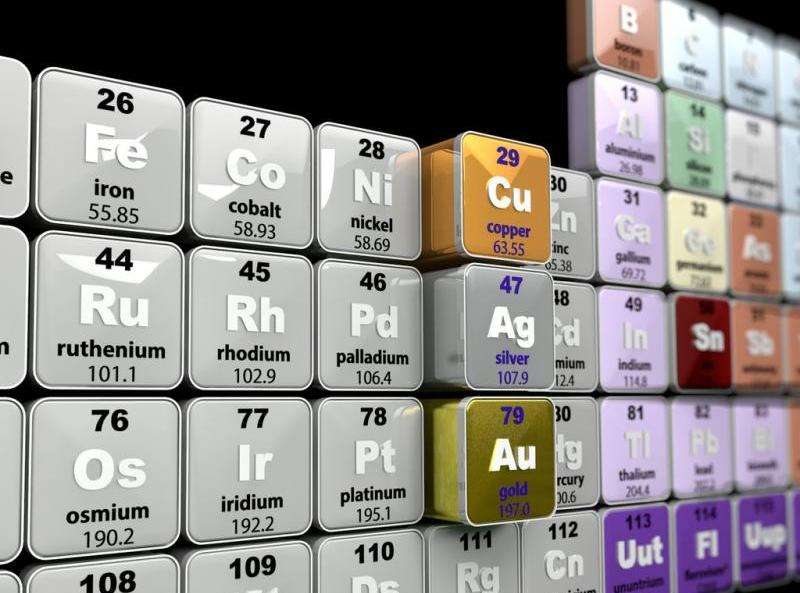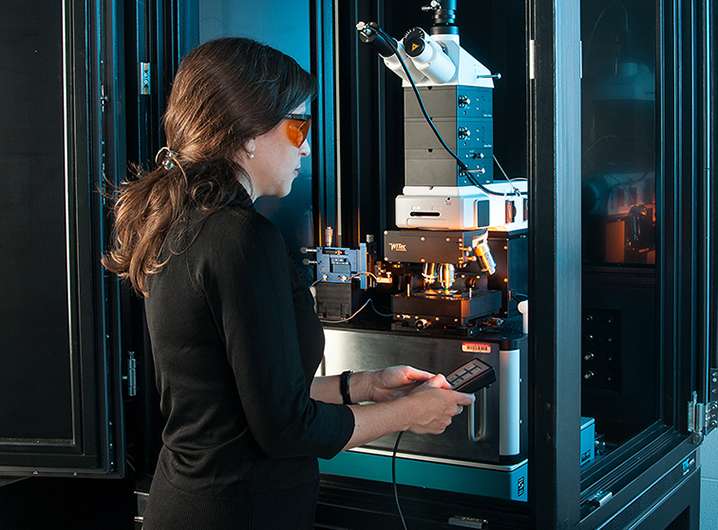Scientists blend coinage metals to obtain alloys better than gold

A peer-reviewed paper based on the study was published recently on the cover of the journal ACS Photonics.
Previous work on tuning the amount of light materials absorb has been constrained by the inherent properties of pure metals.
"Think about sunlight catching the silver of your wristwatch and projecting those little dancing dots on the wall next to your desk. The wavelengths of light needed to produce that effect are always within the same range. This is called a pre-determined optical response, and it has limited researchers' ability to change how much light is absorbed in a device made of pure metals such as gold, silver, and copper," explained Marina Leite, assistant professor of materials science and engineering at UMD and corresponding author of the paper.
To overcome this limitation, Leite and Chen Gong, a graduate student at UMD and co-author of the paper, investigated how the alloying processes of these noble metals affect their optical response to identify combinations that enhance or inhibit the absorption of light.
"This work is a perfect example of the power of materials science and engineering: we discovered a way to control and change metals' optical properties by mixing them. These alloys obtain a unique functionality that is not achievable using their pure counterparts—making them a better, more powerful tool for tunable optical response than gold, silver, or copper alone," said Leite.

"Our results are relevant to my colleagues working on photonic devices—components for creating, manipulating, or detecting light—as these devices are highly dependent on the tunability of the optical response of their building blocks," Leite added.
Jeremy Munday, assistant professor of electrical and computer engineering at UMD, agrees. "My colleagues and I have been working to increase the efficiency of solar cells, specifically by exploring the use of all-metal energy harvesting devices. The ability to arbitrarily tune their optoelectronic properties would have a significant impact on their performance," he said.
This work also has broader economic implications due to the possibility of replacing high-cost metals with low-cost and earth-abundant ones. Though gold is immediately recognizable as a precious and expensive metal, copper and aluminum are much more readily available. Leite and her colleagues are now looking into how they can incorporate alloys using these metals into high-performance optical devices.
More information: Chen Gong et al. Noble Metal Alloys for Plasmonics, ACS Photonics (2016). DOI: 10.1021/acsphotonics.5b00586
Journal information: ACS Photonics
Provided by University of Maryland


















